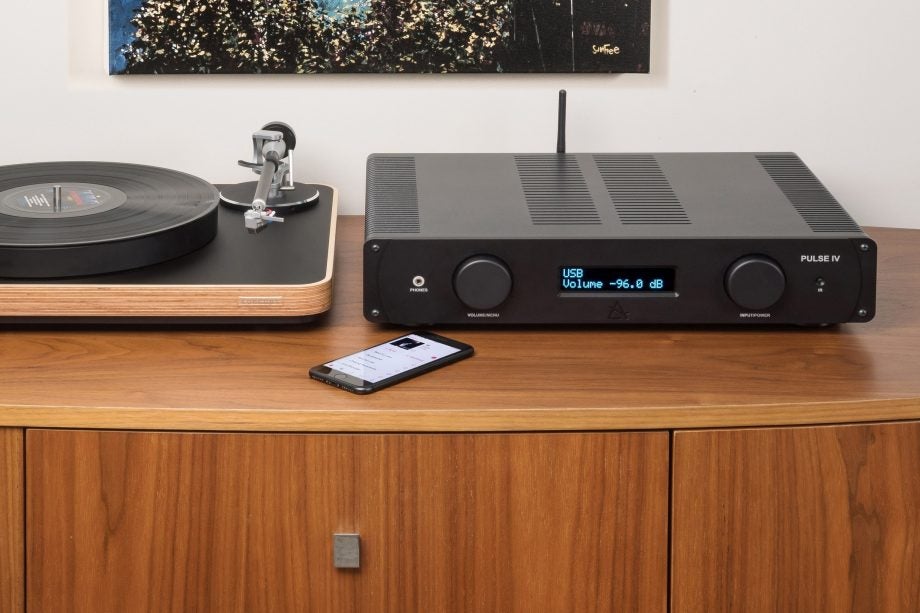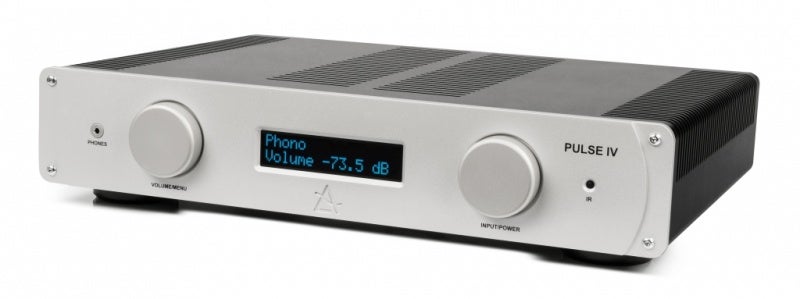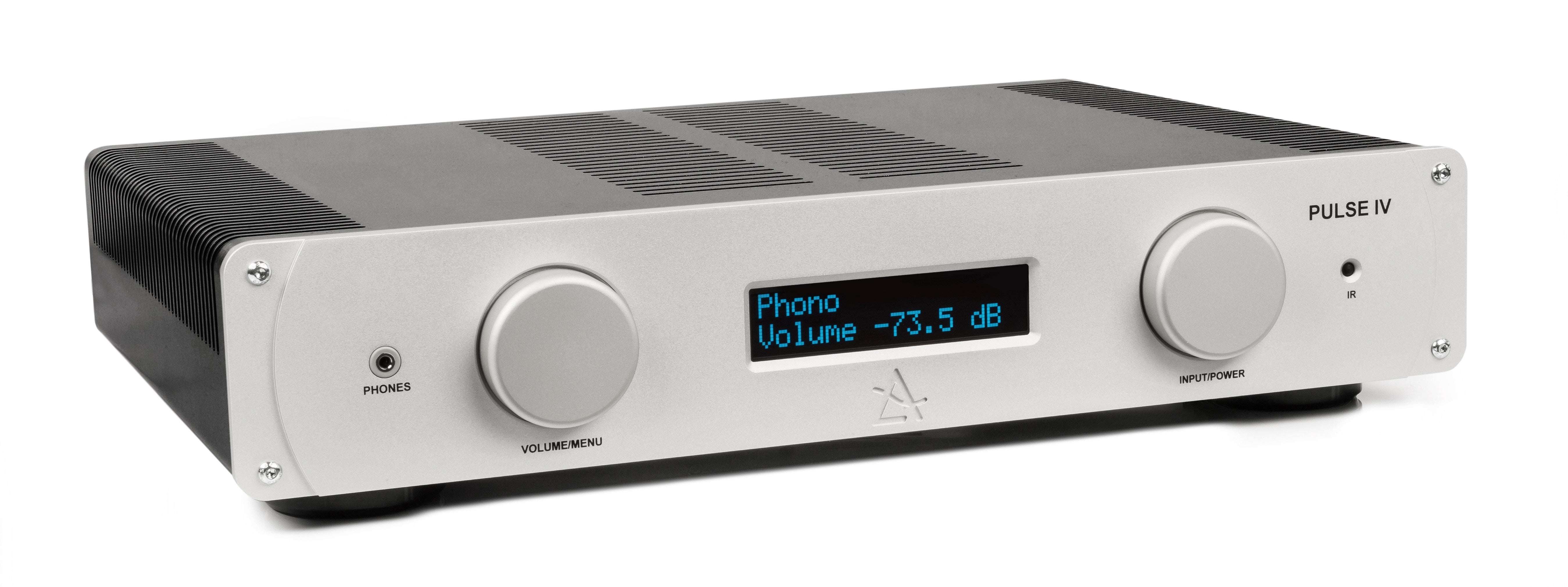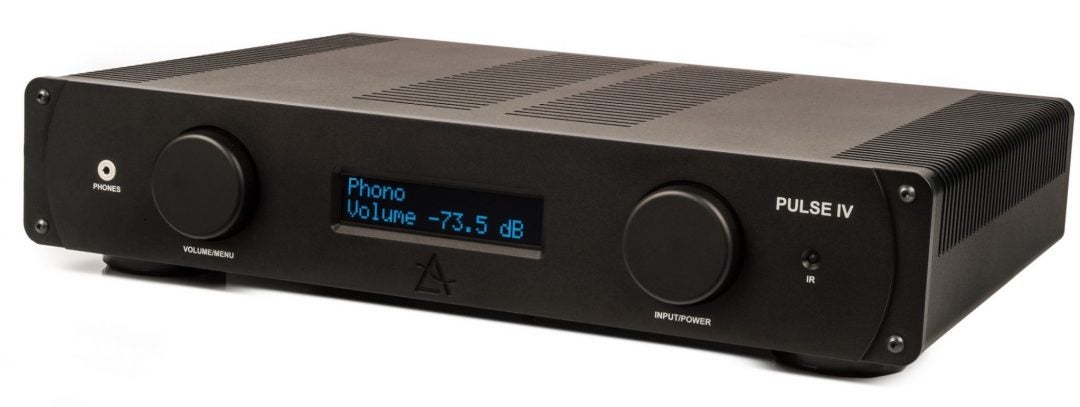Leema Acoustics Pulse IV Review
Leema Acoustics Pulse IV
A great amplifier that's hiding some tricks

Verdict
Pros
- Excellent built-in phono stage
- Great build quality
- Nicely legible display
- Wonderfully transparent sound
Cons
- No Wi-Fi
Key Specifications
- Review Price: £2295.00
- 1 x USB Type B, 3 x coaxial digital in, 3 x optical in, 5 x analogue RCA in, 2 x preamp out, 1 x fixed-level record out
- MM/MC phono stage
- Bluetooth aptX
- 80WPC (8ohms)
- 32-bit/384kHz DSD-capable Sabre DAC
- W435 x H90 x D375mm
What is the Leema Acoustics Pulse IV?
You can’t please everyone all of the time – but you can at least try, and that’s what we get with the Leema Acoustics Pulse IV. The Welsh hi-fi wizards have built an integrated amplifier that aims to play as nicely with vinyl as it does with digital music from laptops and phones.
To that end, it contains all the circuitry from the company’s standalone Elements phono stage, plus a Sabre DAC and even Bluetooth aptX for wireless streaming.
Related: Best turntables

Leema Acoustics Pulse IV – Design and features
Visually, the Pulse might not set pulses racing. It’s very traditionally ‘hi-fi’, with a standard 435mm width. But you can’t complain that it isn’t beautifully built. The aluminium fascia, available in black or silver, is thick enough to stop a bullet (probably) and has the Leema logo classily stamped into it.

The two dual-purpose control knobs – one for volume/menu and the other for input/power – look and feel almost identical to the volume knob on the company’s flagship Tucana II Anniversary amp. They feel a little light, but not wobbly. They turn for volume and input selection, and push in to access the menu and power on/off.
Between the two controls is a blue-lit LCD screen, which displays in a big enough text size to be seen across a reasonably large room. To the left of the volume/menu knob is a 3.5mm headphone socket, while symmetry is maintained thanks to an IR receiver in the same position on the other side. 
Around tbe back is a truly impressive array of connections. More than you’ll ever need, I’d wager. Inputs comprise five RCA analogue, three optical, three coaxial digital, one phono (turntable) and a USB Type-B.
For outputs you get two RCA preamp outs, a fixed-level RCA record out, and 4mm banana plug terminals with binding posts. There’s also an antenna for Bluetooth, but not Wi-Fi. Power is supplied through a standard kettle socket, so you won’t have any problems using a fancy mains cable.
Just a quick word about that phono input: Leema has basically crammed in the whole circuitry from its Elements phono preamp, which is a £600 piece of kit – and one of the best phono stages for under a grand. It can handle MC or MM cartridges.
The remote control is really very nice, even if it doesn’t look it. It’s a good size and the gently curved back is comfortable in the hand. The rubber buttons are responsive and have a positive click, and are accompanied by an LED lighting up on the front. It’s just a shame it looks so naff.

Leema Acoustics Pulse IV – Sound quality
I tested the Pulse IV hooked up to a variety of speakers, while the sources were mostly a Rega RP8 turntable (plus Apheta 2 cartridge), a laptop, or an Onkyo DP-X1 PMP connected over Bluetooth.
Sound quality from every source was universally impressive. There’s an excellent solidity of soundstage created by the Pulse. Its control and depth of bass is particularly commendable.
The incredible Tucana II Anniversary is one of the most transparent amps you’ll ever hear, and the Pulse IV has a similar signature (or lack thereof). It doesn’t have quite the same separation or treble extension as its larger sibling, but it doesn’t add anything it shouldn’t.
I found the phono stage to be particularly impressive, offering a tiny bit more treble clarity than the Sabre DAC could achieve. Both were sublime, though, considering the overall price of this package.
Spinning Craig Finn’s ‘We All Want the Same Things’ – that fantastic vocal on ‘God In Chicago’ – was utterly captivating, while the bottom end on ‘Birds Trapped In The Airport’ thumped along with decent punch as the gorgeous harmonies floated on top.

Why buy the Leema Acoustics Pulse IV?
As an integrated amplifier, the Pulse IV is one of the best-sounding options around the £2000 mark. But add in the fact that it contains a stellar £600 phono stage, a solid DAC, and the convenience of Bluetooth aptX, then it suddenly looks like amazing value.
If you’re not so bothered about vinyl, however, you should definitely consider the superb Naim Uniti Atom. It offers Wi-Fi streaming, server control, and multiroom – all in a more modern design.
Related: Best Bluetooth speakers
Verdict
An excellent integrated amp, packing a great DAC and even better phono stage.


